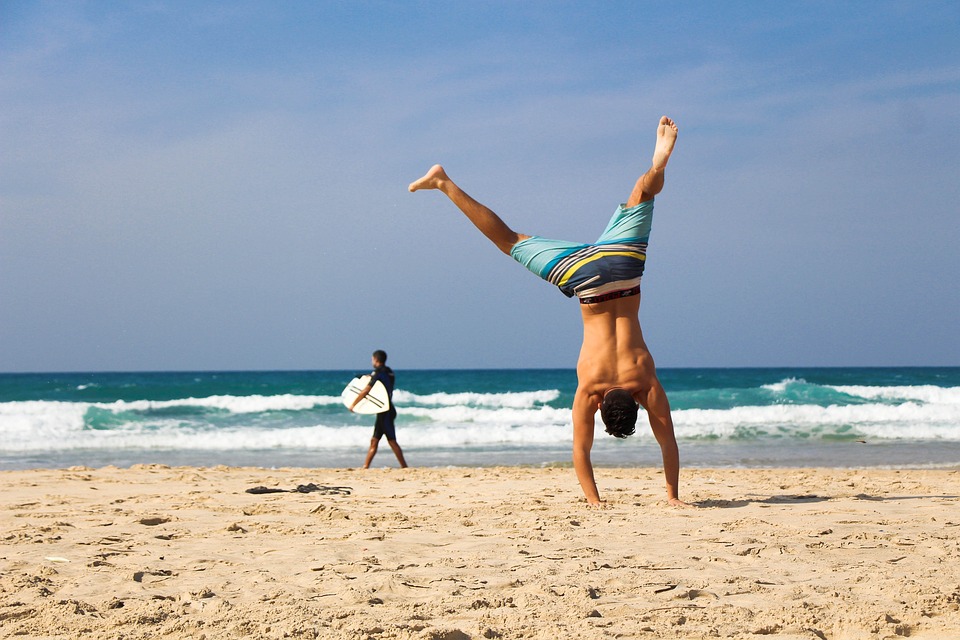
Reverse Lunge Investigation and Breakdown
The Reverse Lunge
The reverse lunge commences in a standing placement with both legs collectively. In get to perform a reverse lunge, we have to have to stage backwards. Hence your 1st intention is to create momentum with a person leg with a pendulum variety swing. This is how we get a action.
In get to start off the swing period of a limb, your entire body will have to first change its fat into a single leg. That is to say from standing you have 50% of force on just one leg and 50% of pressure on the other leg. You shift a proportion of this force from a person leg to an additional. This is the definition of the change period. The shift period is concluded after the physique has transitioned into one limb assist (SLS). SLS is characterized by 100% of the pressure transferred onto a person leg.
At the time the excess weight or strain has been transferred into a one limb, the body accelerates the pressureless leg therefore beginning the swing period. This acceleration is established via synapses in between our mind and our muscle groups. Consequently we have neuro kinetic drive. The swing stage is characterised by its acceleration.
For the reverse lunge, the swing phase is via extension of the hip or driving the human body. As the leg gains acceleration, neuro-kineticly, it gains ample acceleration to transportation our HAT (head, arms, trunk). The acceleration in our HAT comes from the acceleration of the reduced limb making this limb a locomotive apparatus. It is also critical to note that the movement right here is measured by the shift in the bodies Middle of Gravity (COG) which is about located in the pevlicular location at the bottom of the trunk.
We have accomplished the phase at the time the limb in movement (swinging) contacts the floor. The limb in motion then enters the original call section which is the commencing of the decelerative process. The jerk of the deceleration for our rocket scientist. The first get hold of stage is also characterized by an improve in our base of assist, hence the overall body has far more stability. (Also due to the simple fact that you have far more limbs on the floor!)
Now that the back again leg is in get hold of with the floor, the entire body begins to transfer pressure or fat into the back again leg (body weight acceptance period). For a reverse lunge, the total excess weight of the entire body is Never ever totally transferred into the back again leg. Facet note: A total excess weight transfer would arise in dynamic reverse lunges aka strolling backwards
As the body is transferring weight into the back again leg, it is slowing down (decelerating) the momentum it formerly designed to consider the phase. The Similar limb that sped alone up is now attempting to sluggish by itself down!
PAUSE
So if you preferred too, you could quit all of your momentum here. Nonetheless, you would have just just taking a step backwards. The reverse lunge is a continuation of this backwards action, therefore all of your momentum is not stopped with the backwards stage.
RESUME
Intro Training Axis
+X: Ahead
-X: Backward
+Y: UP
-Y:Down
+Z: Left
-Z: Correct
So I have stepped backward, ultimately, and I have momentum in the damaging X path (backwards). I accept body weight into the again leg or swing leg thus decelerating by bodies momentum. For the reverse lunge, I keep on this deceleration of -X as I lower my heart of gravity. My COG is reduced (expressed as -Y) by way of flexion in the knee joint.
In flexion of the knee, the hamstrings are contracted as the quads are stretched. The hamstrings load like pushing a spring down, when the quads extend to decelerate the power. Muscle as explained via the decelerative period
The momentum of -X has been fully decelerated as soon as my knees have arrived at 90 degrees. This degree is the most mechanically advantageous for your muscle to develop drive. And also decelerate drive. This is why major squaters go to 90 levels on there carry.
Now you have properly decreased your COG at the time you have decelerated all the momentum. This is 50 percent way! Now to complete the movement you ought to accelerate back again into posture. Try to remember our spring loaded hamstrings and stretched out quads? They unload to create acceleration. Hence the acceleration of this motion will come by contracting the quads, and stretching the hamstrings. So these muscle tissues accelerate your loaded limb in get to develop momentum to elevate your HAT back into position (transferring in the +Y route). This is stepping into standing posture. Note that the standing position easily decelerates the momentum of the lunge.
Muscular Perform
In the 1st accelerative section of the reverse lunge (backwards move), the main hip extendors are activated. These are your glutes (all fibers) and hamstrings.
In the course of the decelerative section your COG is decreased as a result of knee flexion. Thus your hamstrings are contracted and quads are stretched. This is a typical loading posture and will make dynamic stability in the swing limb. Also, because of to the uni-lateral loading of the front leg, you will establish hip, knee and ankle steadiness.
The return period of the motion is motivated by acceleration thanks to hip flexion. The quads stretch is unloaded and the hamstrings spring out an stabilize the flexion. A substantially potent acceleration than our former hip extension. The COG raises and we return to our standing position.
It is owing to these muscular capabilities that the reverse lunge is claimed to be a uni-lateral workout that performs the decelerative purpose of the glute and hamstrings. Or in gym communicate. It will work the glute and hamstrings!
